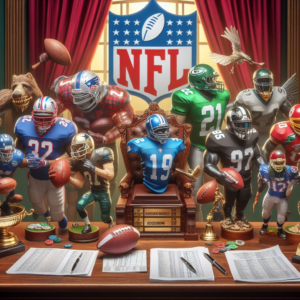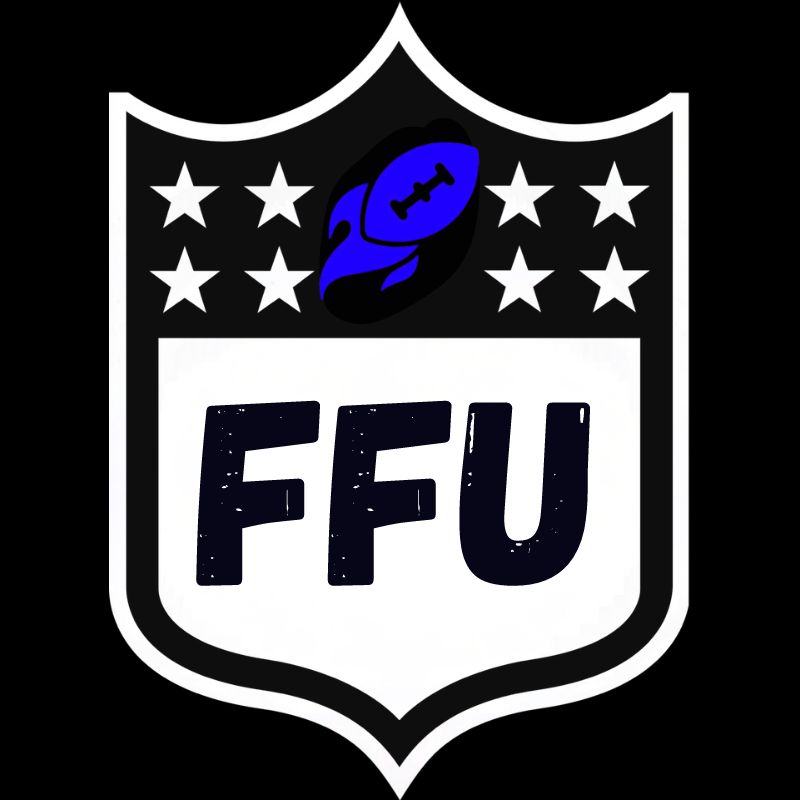For the general public, a standard fantasy football league suffices. If you’re reading this article, you may have grown weary of normal leagues and would like to try something new. Crash Course, a Fantasy Football Universe series, delves into unique formats. So, let’s start with Bid Blitz: Mastering Fantasy Auctions.

How Does it Work?
An Auction League is not a specific league type, but rather a draft type. Let me say this, if you are new to fantasy football and are unsure of players and their values, please do not join this draft format.
This format requires you to have a very definitive plan on how you want to build your team and it requires you to be familiar with the value of every potential player that could be selected.
How is it different?
As I stated above, the league itself is no different. It can be redraft, dynasty, or even devy. It’s just a matter of how you draft your team. These drafts tend to take much longer than your standard 12-team snake draft as the bidding process on each player eliminates the run of quick picks and rounds in favor of a much longer process.
How does the Draft work?
The draft is the main difference in this league. Here is how it goes:
1- The draft order is drawn just like in any snake draft.
2- When the draft begins, the first player on the clock gets to nominate a player. This does not mean they get this player as their draft pick, it means that he is now on the board and will be bid on by all 12 managers with the highest bidder winning that player.
3- This process continues over and over and over again until each team has a full roster.
4- Each manager is not required to bid on anyone. Some teams will fill out their roster quickly, while others will fill out their team much later. It’s all about targeting the players you want at the price you want
A look at the Rosters
Rosters are open to league preference. They can be anything from a deep dynasty roster to a shallow redraft roster. The auction draft does not change the roster limit at all, it merely changes how you construct your team itself.
How does the Waiver Wire work?
As always, the waiver wire settings are a matter of personal preference and vary depending on the league. Much like with roster composition, the waiver wire is entirely format-dependent and is in no way affected by the auction draft itself.
How the scoring works
Again, scoring is not impacted by the league and can be done in any manner of your choosing. There is no wrong or right answer here, it’s all up to you and your league mates. The auction draft does not impact the scoring. Although the scoring will greatly influence the auction itself as it will drive up the prices on certain positions that get a boost in the format.
The Consensus Strategy
- Studs & Duds: This is a strategy that many newcomers to auctions will employ. They spend the majority of their budget drafting a stud at each position and fill out the rest of their roster with wide-wire players and low-cost options.
- Spend Early: This piggybacks on the previous strategy. Some managers choose to spend their budget quickly before the truly elite players are off the board.
- Tier-Based Drafting: This is an important strategy in all formats but even more so in an auction draft. It can you when to stick rigidly to your budget and when is a good time to over-extend a little bit on a player. If I have the last tight end valued at $15 but he is the last tight end before a massive tier drop, I may need to up my bid slightly higher than I wanted to avoid that drop off in talent.
My Strategy
- Value-Based Drafting: This strategy involves a ton of work and that is why I don’t suggest this format for rookies. It requires you to make a rankings list and convert that to a set dollar value for each player. From then you have a guide telling you how much you are willing to spend on each player. When they exceed that dollar value, you know it’s time to move on and let the higher bidder have them. I choose to stick to my values and in most cases find myself going deep into a draft before I draft my first player. When I do finally get involved, I end up with a roster full of solid players that I got well below their value. I may not have ended up with a Top-5 running back, but I will end up with six in the top 20.
- Fake Nominations: I love to use my early-round nominations to nominate players I have little interest in but that are receiving tons of hype. I will nominate this player for $1 and hope a bidding war breaks out and managers use vital resources early in the draft on a player I didn’t even want. If nobody falls for the trap, then I get the player for $1 and the value falls to me.
- The PK/DST Cheat: This strategy works because no one should ever spend more than $1 on any kicker or DST in an auction. To do so is just plain stupid. So when I am on the clock, I will nominate the best kicker or DST for $1 until I win one of them. If nobody bids on the PK1 or DST1, then I get the positional advantage for only $1, if people choose to outbid me and bid $5-10, then I win because they have wasted valuable money on a position that isn’t worth the extra dollars. This wasted money will benefit me later in the draft.
In Closing
This format is what I consider to be an expert format. I do not recommend venturing into these deep waters unless you are supremely confident in your abilities. I’ve frequently seen experienced managers get overwhelmed in this format and end up with a squad they hate.
Don’t forget to check out the rest of the Crash Course Series. Have a look at the 2024 Fantasy Football Universe Auction League draft stream or take a look at the draft board on Sleeper. You can also check out our Auction Value Chart for a better idea of each player’s value.

